7 Chocolate and French Wine Pairings for Valentines!
Chocolate and Wine....Much like wine, chocolate is harvested, fermented, liquified and "made" into the final product. The "terroir" and the "maker" bring much to the final product.Cocoa grows near the equator, and the heat and type of plant (like wine) create distinct flavor profiles. Cocoa beans are harvested and then fermented. They are dried and processed and eventually ground, roasted and broken down. Finally, they go through a process called "conching", which is akin to constant kneading--and determines the texture of the chocolate. At this point the chocolate is then used as a raw product for artisans and large manufacturers to make their bars, ganaches, clusters and other candies.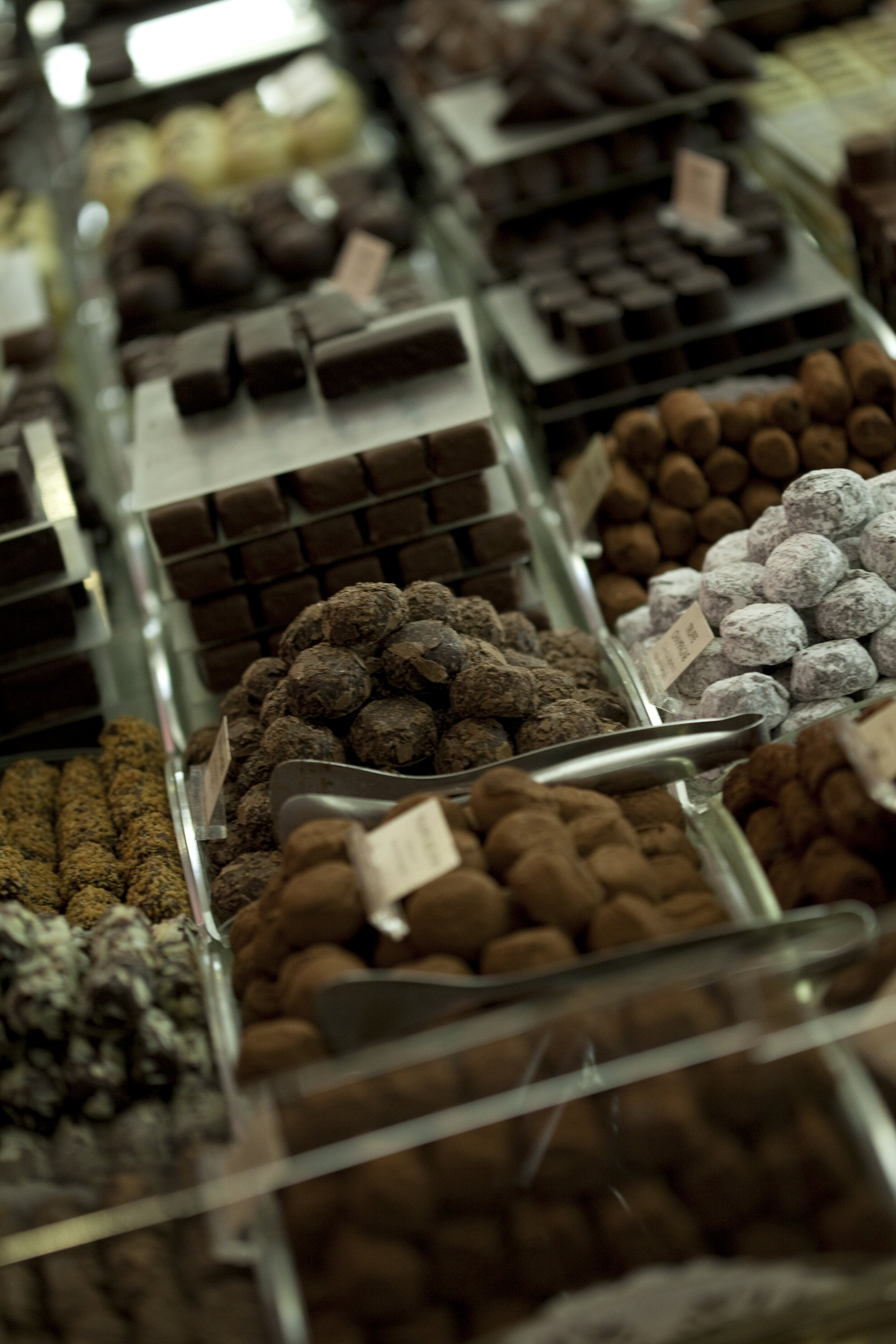 Each manufacturer adds his/her own special mixture of ingredients --vanilla, sugar, cream, spice, nuts. Different cultures tend to produce similarly styled chocolates. American chocolates tend to be sweeter, less pure (i.e. milk v. dark) and larger. Belgian and French tend to use much less sugar, rely on thinner more delicate shells for their filled chocolates, use pure creams in the centers (not 'creamy' sugar fillings), and produce higher percentages of purer (i.e. more dark and less milk) chocolate.This blog is going to focus on Pairing French Wine and Belgian or French Chocolate, of course!Here are 7 tips and pairing suggestions to sweeten your Valentine's Day at home or abroad. 1. Pair Champagne with chocolates. Especially with lighter less rich chocolates, or fresh filled Neuhaus creams. Also, this pairs well with chocolate fruit combinations.
Each manufacturer adds his/her own special mixture of ingredients --vanilla, sugar, cream, spice, nuts. Different cultures tend to produce similarly styled chocolates. American chocolates tend to be sweeter, less pure (i.e. milk v. dark) and larger. Belgian and French tend to use much less sugar, rely on thinner more delicate shells for their filled chocolates, use pure creams in the centers (not 'creamy' sugar fillings), and produce higher percentages of purer (i.e. more dark and less milk) chocolate.This blog is going to focus on Pairing French Wine and Belgian or French Chocolate, of course!Here are 7 tips and pairing suggestions to sweeten your Valentine's Day at home or abroad. 1. Pair Champagne with chocolates. Especially with lighter less rich chocolates, or fresh filled Neuhaus creams. Also, this pairs well with chocolate fruit combinations.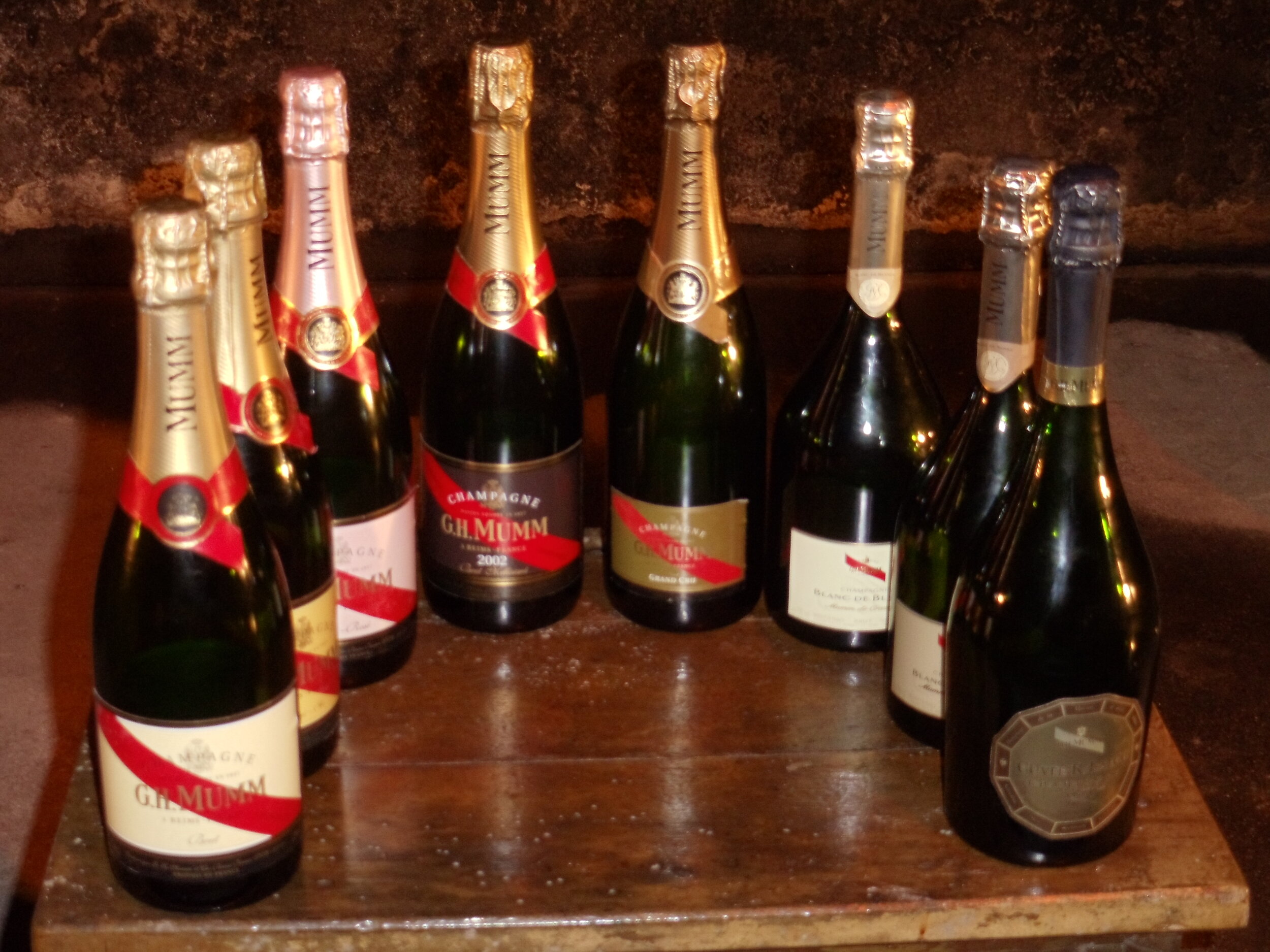 2. Pair a French Burgundy (Pinot Noir) with mild, but rich dark chocolates, and dark chocolates with mild spice, roasted nuts or ripe berry fruits. So, consider chocolates with cardamom, hazelnut or dark cherries for these wines.
2. Pair a French Burgundy (Pinot Noir) with mild, but rich dark chocolates, and dark chocolates with mild spice, roasted nuts or ripe berry fruits. So, consider chocolates with cardamom, hazelnut or dark cherries for these wines.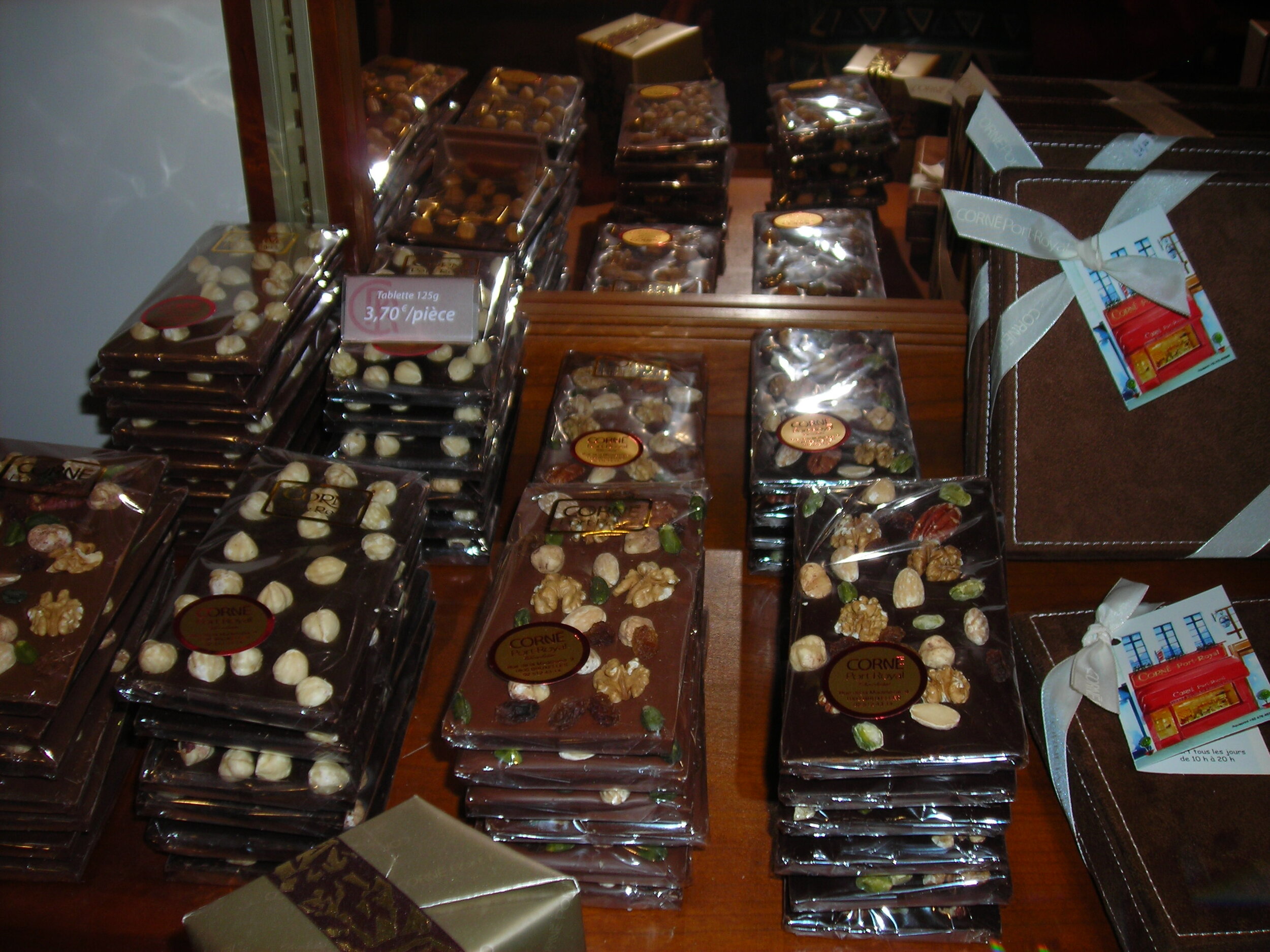 3. Pair Rhone wines, such as a Chateauneuf du Pape (and other Grenache heavy wines) or wines with rich spicy flavor and high tannins with highly spiced complex chocolates that can match the power of the wine. So, consider chocolate and chili pepper or chocolate with pink peppercorns or strong tea flavors and spice mixtures as good combinations.
3. Pair Rhone wines, such as a Chateauneuf du Pape (and other Grenache heavy wines) or wines with rich spicy flavor and high tannins with highly spiced complex chocolates that can match the power of the wine. So, consider chocolate and chili pepper or chocolate with pink peppercorns or strong tea flavors and spice mixtures as good combinations.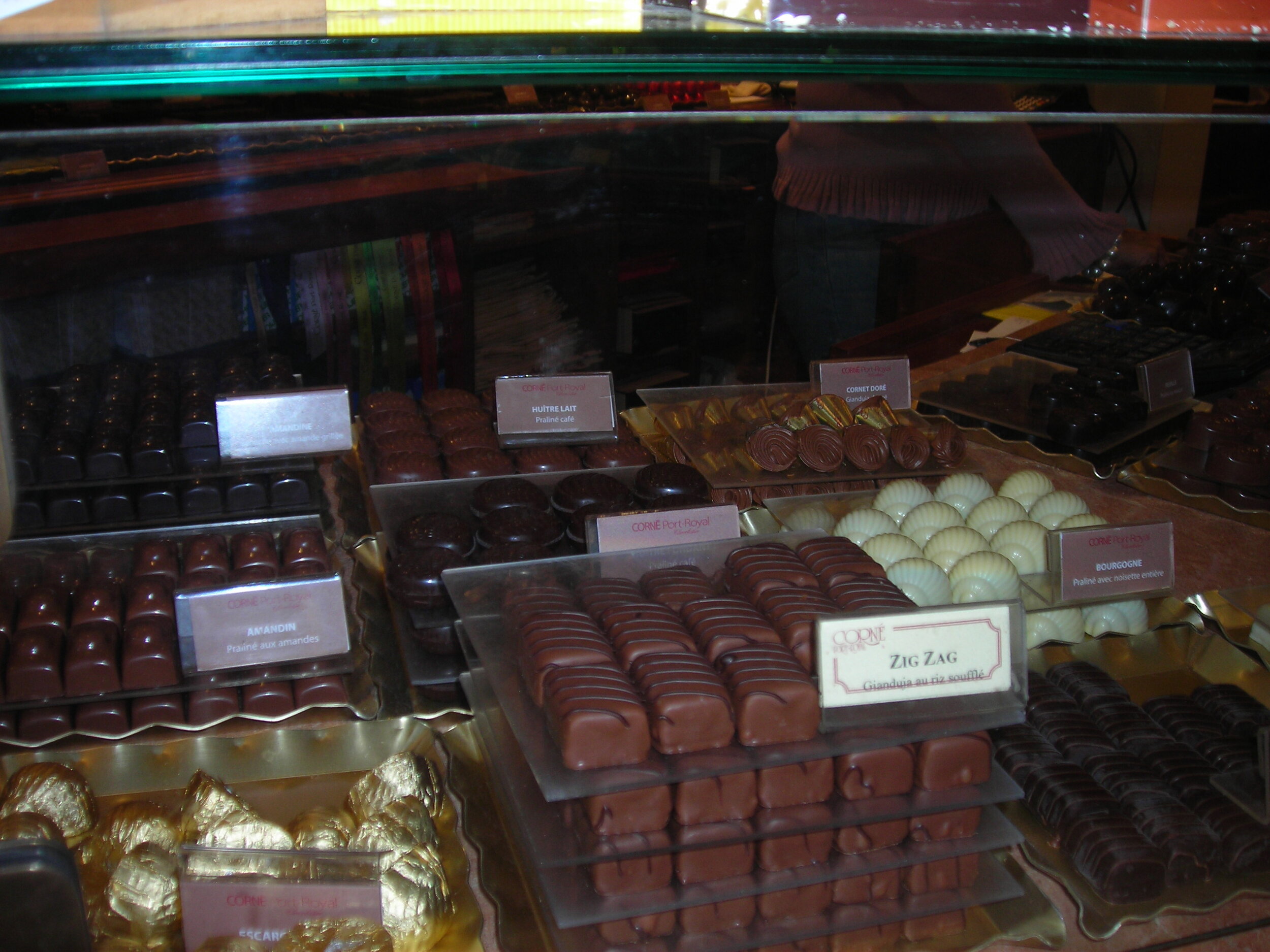 4. For purists, wanting to experience the depth of one flavor, use a single origin chocolate with a single grape wine. You can focus on the subtly of each more easily.5. Pair a dessert wine, we prefer a Muscat de Beaumes de Venise, with a salted chocolate or salted caramel chocolate. Make sure you use a rich full flavored deep chocolate. Not a milk chocolate.6. Have a Cognac with a chocolate --either complement it with a cognac flavored truffle or find a very low sugar, almost pure, dark chocolate.
4. For purists, wanting to experience the depth of one flavor, use a single origin chocolate with a single grape wine. You can focus on the subtly of each more easily.5. Pair a dessert wine, we prefer a Muscat de Beaumes de Venise, with a salted chocolate or salted caramel chocolate. Make sure you use a rich full flavored deep chocolate. Not a milk chocolate.6. Have a Cognac with a chocolate --either complement it with a cognac flavored truffle or find a very low sugar, almost pure, dark chocolate.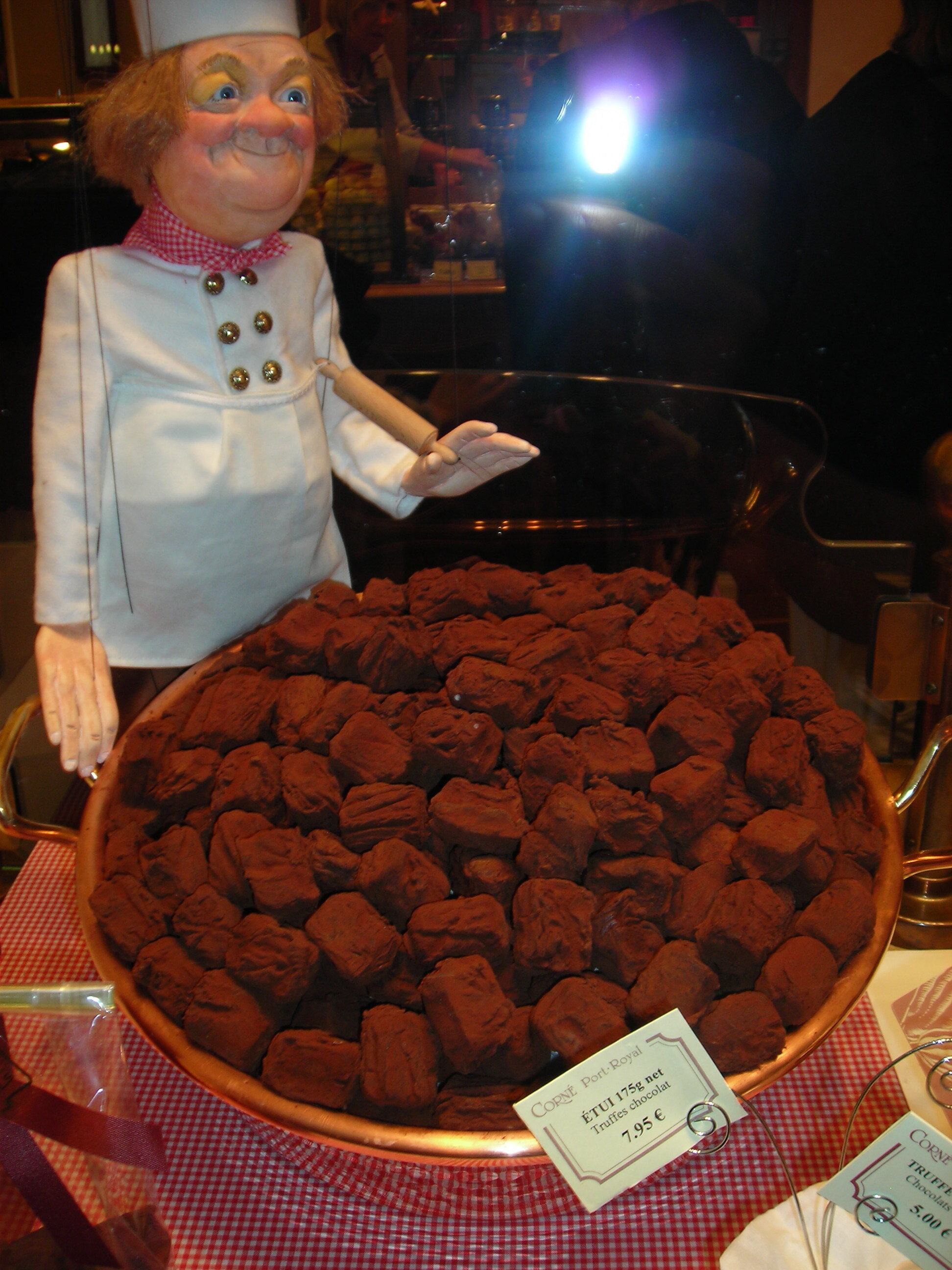 7. Come with Bliss Travels where we do custom pairings and tastings of these things all over France, and in Brussels! At all the best spots! That's why we call it Bliss!
7. Come with Bliss Travels where we do custom pairings and tastings of these things all over France, and in Brussels! At all the best spots! That's why we call it Bliss!

